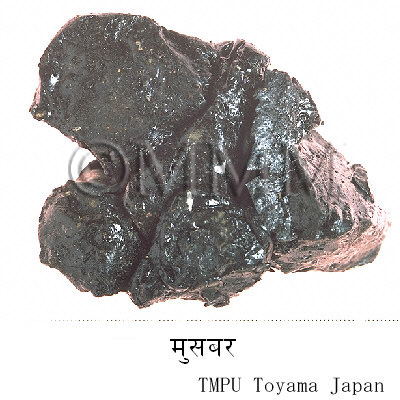Crude drug sample data base
※Click on the image to enlarge it.
Crude drug name | Market name | Musabar |
|---|---|---|
| Formal name | Krsnabola | |
Other names Tips! | Mussabbar, Eluwa (T), Moshabar (B), Eluwa, Ghi kanwar (H), Lolirasa (K), Kumari, Kattar vala (M), Mushambaram, Chinnakata benda (Te), Kattalai, Sattukattalai (Ta), Ghiu kumari (N), Komarika (Sin) | |
| English name | Indian Aloe, Barbados Aloe, Curacao Aloe, Jafarabad Aloe | |
| Original plant name | Aloe barbedensis Mill. (= Aloe vera (L.) Burm. f.), Indian Aloe, Barbados Aloe, Curacao Aloe, Jafarabad Aloe | |
| Family name | Liliaceae | |
| Used part | Classification | Plant origin | Sub classification | extract |
| Collection information | Kingdom of Nepal, Kathmandu | |
| Collection date | 1991/04/28 | |
| Collector | Tsuneo Namba, et al. | |
| Remarks | Used part is dried extract from leaves. | |
| TMPW No. | 14731 | |
The capital city, provincial capital city or the representative
location of its administrative area is indicated.
location of its administrative area is indicated.
Production area information
https://ethmed.toyama-wakan.net/img/pin_san.png
27.7172453
85.3239605
Collection information
Kingdom of Nepal,Kathmandu
https://ethmed.toyama-wakan.net/img/pin_nyu.png
Scientific information data base
| Crude drug name | Ayurvedic name or Sanskrit name, English name | Krsnabola, Indian Aloe, Barbados Aloe, Curacao Aloe, Jafarabad Aloe | |||
|---|---|---|---|---|---|
| Synonyms | Aileyaka, Kumarirasa | ||||
| crude drug image |
| ||||
| Original plant name | Aloe barbedensis Mill. (= Aloe vera (L.) Burm. f.) | ||||
| Family name | Liliaceae | ||||
| Used part | Leaf juice dried, Leaves | ||||
| Distribution area | Planted in Indian gardens and naturalised in several areas in the plains throughout India. | ||||
| Remarks | Common. | ||||
| Common uses | This drug is useful in the treatment of amenorrhoea/amenorrhea, atonic dyspepsia, spleen diseases, menstrual suppression, worm infestation, and sexual weakness. Fresh juice of leaves is cathartic and cooling. It is used in eye troubles. It has been found useful in x-ray burns, dermatitis, cutaneous leishmaniasis, and other disorders of skin. | ||||
| Therapeutic uses | Sula (colic), Adhmana (distension in abdomen), Krmi (worms), Gulma (intestinal tumours/tumors), Durnama (piles), Netra (eye diseases), Bhagandara (fistula) | ||||
| Chemical constituent | Others - Aloin, Aloesone, Aloesin, isobarbaloin, barbaloin, emodin and gum resin. - Whole leaf, rind and pulp contain: Oxidase, Uronic acid, Catalase and Sugars. - Juice contains anthraquinone derivatives like emodin and chrysophanic acid. | ||||
| Pharmacological effect | Leaf extract inhibits the growth of Myobacterium tuberculosis which is attributed to the presence of barbolin. | ||||
| Medical system | Ayurveda (Traditional Indian medicine) | ||||
| Traditional concept | Rasa (Taste) | Katu (Pungent) | |||
| Virya (Potency) | Sita (Cold) | ||||
| Guna (Quality) | Guru (Heavy) | ||||
| Dosakarma (Action on dosa) | Decreases Kapha Vata | ||||
| Dhatukarma(Action on body tissues) | Rasasodhana (Purifying rasa) | ||||
| Mala (Action on excretory mechanism) | Bhedaka (purgative) | ||||
| Formulation | Kumaryasava, Kumari Vati, Rajapravartini Vati, Kumari Paka, Cukkumtippalyadi gutika | ||||
| References | Reference book Tips! | [2] Indian Medicinal Plants - A Compendium of 500 species, Varier, P.S., Orient Longman Ltd. Chennai (Madras) Vol. 1 (Repr.1996), p 105. Glossary of Indian Medicinal Plants, 1956. Chopra, R.N., Nayar, S.L. and Chopra, I.C., Council of Scientific & Industrial Research, New Delhi. - New Edition (1996) National Institute Science Communication; Supplement p 13. Illustrated Manual of Herbal Drugs Used in Ayurveda, 1996. Sarin, Y.K., Council of Scientific & Industrial Research and Indian Council of Medical Research, New Delhi p 336. Ayurvedic Drugs and Their Plant Sources, 1994. Sivarajan, V.V. and Balachandran, I., Oxford & IBH Publishing Co. Pvt. Ltd., New Delhi p 261. The Ayurvedic Pharmacopoeia of India, Part I, Vol I, Ed. I, 1989. Govt. of India, Ministry of Health & Family Welfare, Dept. of Health, New Delhi p 62. Plants in Ayurveda (A Compendium of Botanical and Sanskrit Names), 1997. Abdul Kareem, M., Foundation for Revitalisation of Local Health Traditions, Bangalore 86. | |||
| Last renewal date | 2023/12/25 | ||||



